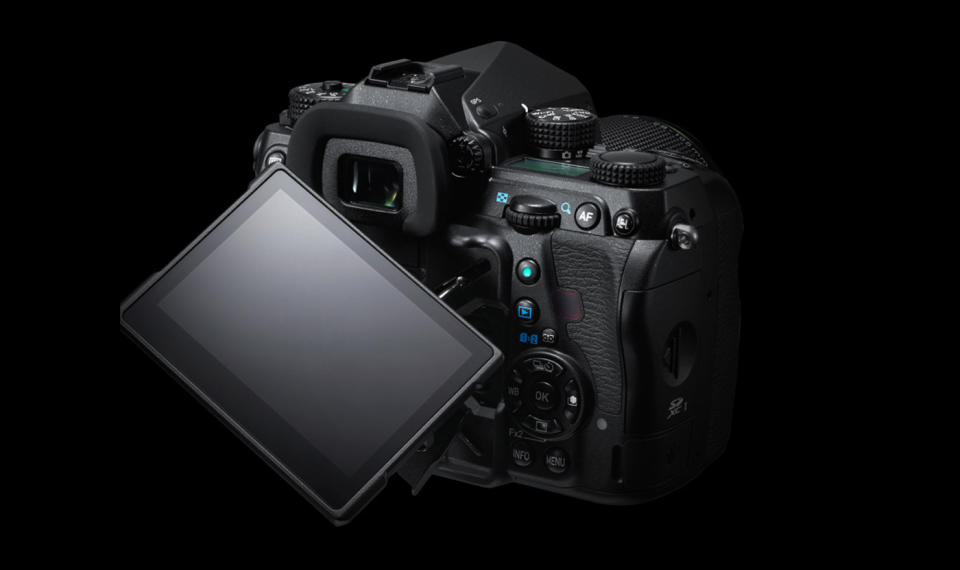The Pentax K-1 is its first full-frame DSLR
At $1,799 it undercuts rivals, but there are only two new lenses for it.

Pentax has finally filled a big hole in its lineup with the K-1, its first full-frame DSLR. The camera arrives a year after Pentax first revealed a full-frame prototype, and considerably later than parent Ricoh's ETA of late 2015. The K-1 appears to be a solid first attempt at a full-frame camera, however, especially considering its $1,799 price -- less than most other full-frame models from Canon, Sony and Nikon. That sum will get you a weather-resistant, dustproof magnesium body with a 36.4-megapixel full-frame sensor, top sensitivity of a 204,800 ISO and 4.4 fps maximum shooting speed.
The camera's most unique element is a pull-out, twisting 3.2-inch LCD screen that should be handy for low- or high-angle shooting. Another first is the "operation assist lights," which are small LEDs that that help you swap memory cards or tweak setting in low-light conditions. Other features include 5-axis image stabilization, close to 100 percent viewfinder coverage, a top 1/8000 second shutter speed and 1080p/30fps video. There's no optical low-pass filter, but Pentax says the K-1 can reduce moire just as much as an OLPF by "applying microscopic vibrations to the image sensor."

Pentax launched two new lenses along with the camera, the HD Pentax-D FA 15-30mm f.2.8 ultra-wide angle zoom and the HD Pentax-D FA 28-105mm f/3.5-5.6 compact zoom lens. There are 10 other full-frame lenses available, but those are older (though fabulous) models that lack autofocus and stabilization. You can also use Pentax's medium-format 645 lenses with an adapter, or Pentax K-mount APS-C lenses if you don't mind the 1.6 times magnification. However, if you need a modern prime lens or anything else with autofocus, you'll be stuck until Pentax comes out with more models -- which it has promised to do soon.








